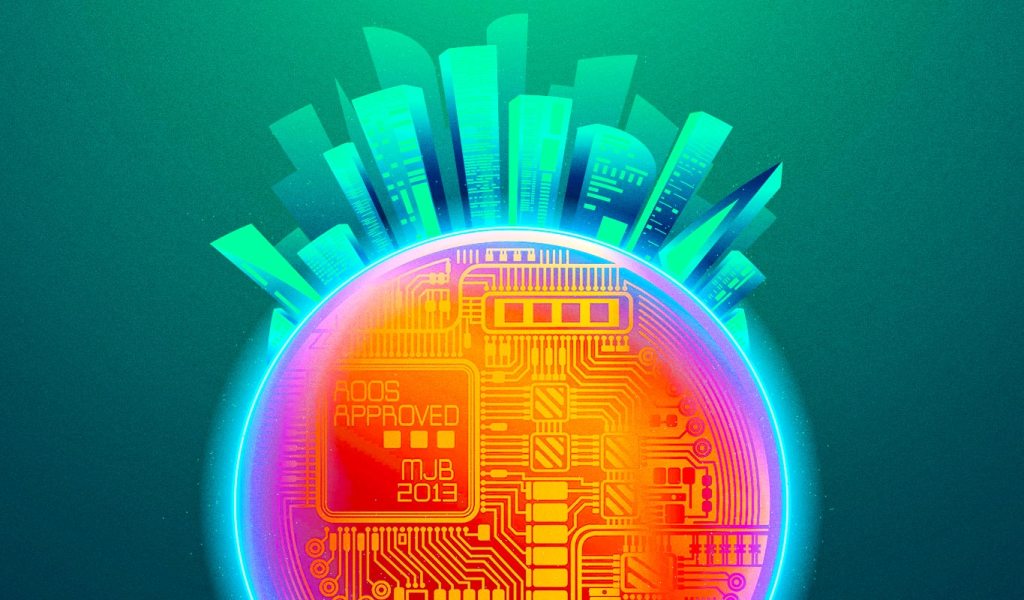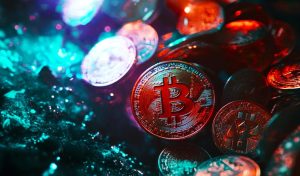
HodlX Guest Post Submit Your Post
Amid soaring inflation rates that continue to impact the cost of living, it’s impossible to know for certain when inflation will slow down.
Until then, populations continue facing significant financial strain while grappling with the rising cost of living.
Given these circumstances, it’s clear that not everyone can afford to invest thousands into high-risk, high-reward investments and stock options to hopefully generate extra income.
However, RWA (real-world asset) tokenization could provide an appealing alternative.
Tokenized RWAs, for those unfamiliar, are physical assets like real estate, art or commodities that are digitized and represented by tokens on a blockchain.
The process of tokenizing RWAs follows a few steps that begin with defining if the token is fungible or non-fungible, selecting the issuing blockchain, third-party auditing for the off-chain asset, issuance and post-issuance management.
With assets like art, for instance, a gallery or auction house could offer tokenized shares of blue-chip works by Picasso or Warhol and owners of these shares would receive a portion of the profit once the physical artwork is sold.
Likewise, banks like HSBC now offer a Gold Token, enabling those who perhaps can’t afford to buy gold bars to possibly achieve passive income as the price of gold rises.
By enabling fractional ownership, tokenized RWAs allow even those with limited capital to participate in substantial ventures, opening opportunities for financial growth and stability, particularly for young investors.
But is it quite ready to do that?
The rocky path to investing uncertainty
Understanding how tokenized RWAs could impact the investment landscape starts with taking the temperature of today’s investment ecosystem.
The current investment landscape reflects a cautious and guarded approach among the public especially younger generations with a greater aversion to investing.
That being said, these aversions are not unfounded. Although it has been 16 years since the 2008 global financial crisis, its lingering impact is still felt by millions worldwide.
Reports have shown that the recession significantly eroded trust, leaving many hesitant to invest as the world witnessed one of history’s worst financial crises, wiping more than $2 trillion from the global economy.
Even those who were too young to invest in 2008 still have skepticism due to wariness of potential losses and protectiveness over their hard-earned savings.
Today, events like the 2008 financial crisis have a wider impact due to our online interconnectedness.
As online communities and financial markets become increasingly intertwined, the rapid spread of information significantly influences trading decisions and investor sentiments, sometimes with unintended consequences.
Need we forget the great GameStop-Reddit fiasco, which effectively bricked social trading platforms like Robinhood?
This event highlights the internet’s power in financial markets and its potential to reshape discussions about the future of trading and investment stability.
As such, the public has now turned towards crypto and its high return potential however, the digital asset market continues to face mainstream adoption challenges due to its volatility.
During the first two months of 2024, more than $200 million in cryptocurrency was lost to security breaches.
That means crypto is off the table as a passive income vehicle for many people.
So, what are the alternatives if younger generations want to earn a passive income but aren’t drawn to the investing options available conventional or otherwise especially during times of market volatility?
Embracing new financial opportunities
Investing in physical assets has been long viewed as a relatively stable option, as these assets tend to retain their value and provide a hedge against economic instability.
Despite the interest, accessing these investments has become increasingly challenging, posting barriers for individuals seeking to diversify their portfolios.
One of the most enticing components of tokenized RWAs is the ability to lower entry barriers for investors.
As such, the tokenization market has grown significantly, with forecasts predicting tokenized RWAs could reach $16 trillion in value by 2030.
For example, an investor participating in fractional ownership targeting residential apartments through tokenized RWAs can enjoy passive income without bearing the burden of day-to-day operational responsibilities.
The ability to invest in physical assets through tokenized RWAs not only provides stable rental income but also offers the potential for capital appreciation.
This dual benefit of income generation and asset growth contrasts sharply against the volatility and uncertainty associated with traditional investment options.
Even some of the world’s most established banks have started to engage with tokenized RWAs, recognizing the potential of this blockchain use case to meet the changing needs of their clients.
The connection of tokenized RWAs to physical assets adds a layer of trust, mitigating some of these concerns to confidently open up investment opportunities to those wary of digital finance, broadening the investor base.
While gaining trust takes time, people can find comfort in investing in tokenized RWAs backed by physical assets rather than investing in volatile and risky stocks or unproven tokens.
This approach supports financial security and accountability through blockchain while expanding income opportunities for those looking to make extra side money.
The truth is that no investing tool will ever be perfect or foolproof, and the regulatory hurdles surrounding tokenization will still likely push people away.
But tokenized RWAs at least offer investors a tangible way to approach financial diversification.
So, could RWAs be a passive income option? While RWAs could eventually be a smart way to make side cash, investors must do their due diligence to research and understand this emerging financial landscape.
RWAs present a unique opportunity for those seeking investment alternatives beyond traditional options however, like any new financial technology, the risks associated with investing are always present.
Yunes Emre Ozkaya is founder and CEO of FreeBnk, a next-generation crypto bank that leverages neobanking, fintech, crypto and Web 3.0 technologies to create a financial super app for investors. With over two decades of experience in business leadership, sales and marketing, Yunes’ mission is to build innovative and sustainable solutions that empower people to make a positive impact with their money.
Follow Us on Twitter Facebook Telegram

Disclaimer: Opinions expressed at The Daily Hodl are not investment advice. Investors should do their due diligence before making any high-risk investments in Bitcoin, cryptocurrency or digital assets. Please be advised that your transfers and trades are at your own risk, and any loses you may incur are your responsibility. The Daily Hodl does not recommend the buying or selling of any cryptocurrencies or digital assets, nor is The Daily Hodl an investment advisor. Please note that The Daily Hodl participates in affiliate marketing.
The post Could Tokenized Real-World Assets Bring Passive Income Back From the Dead appeared first on The Daily Hodl.
















